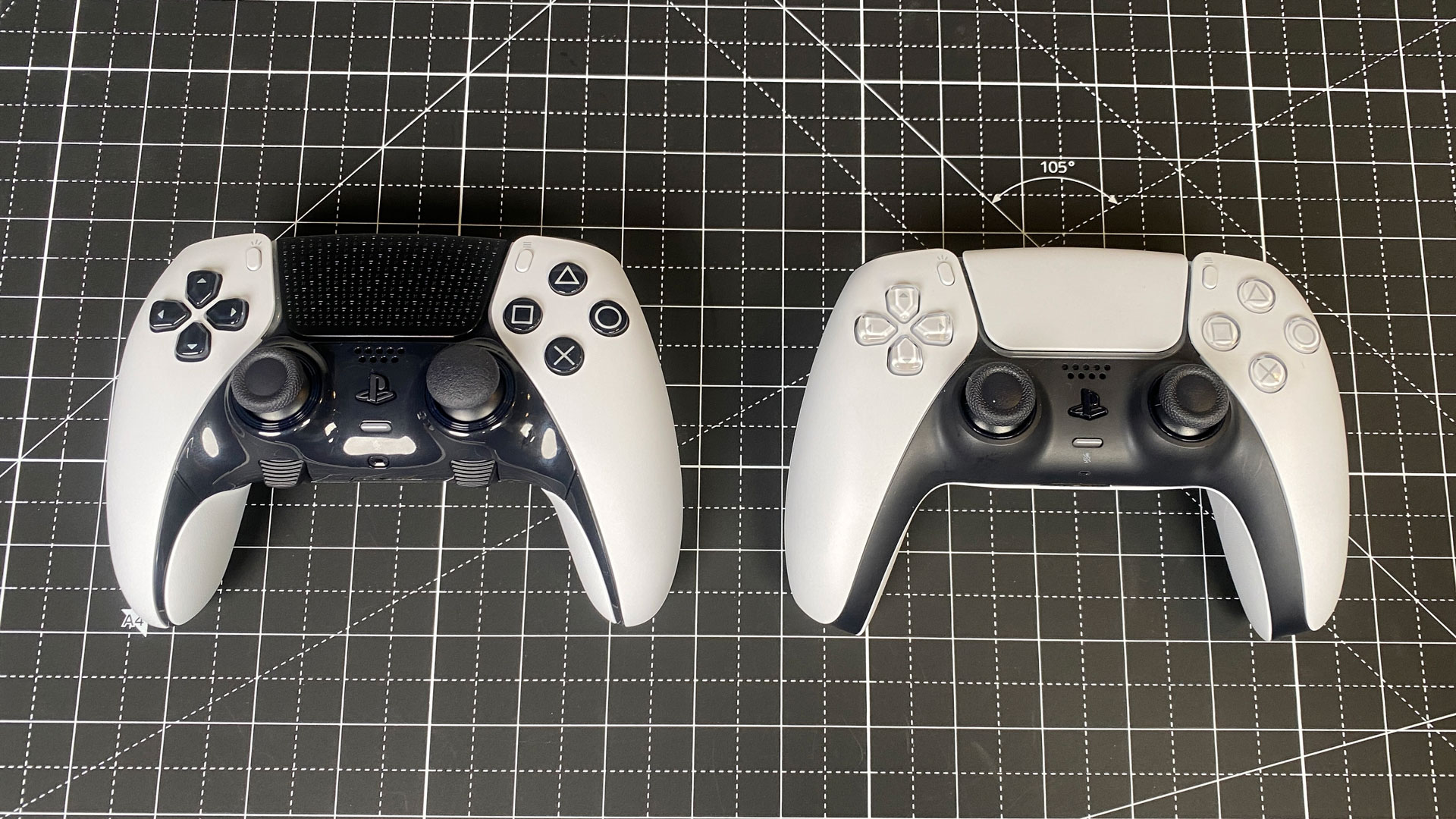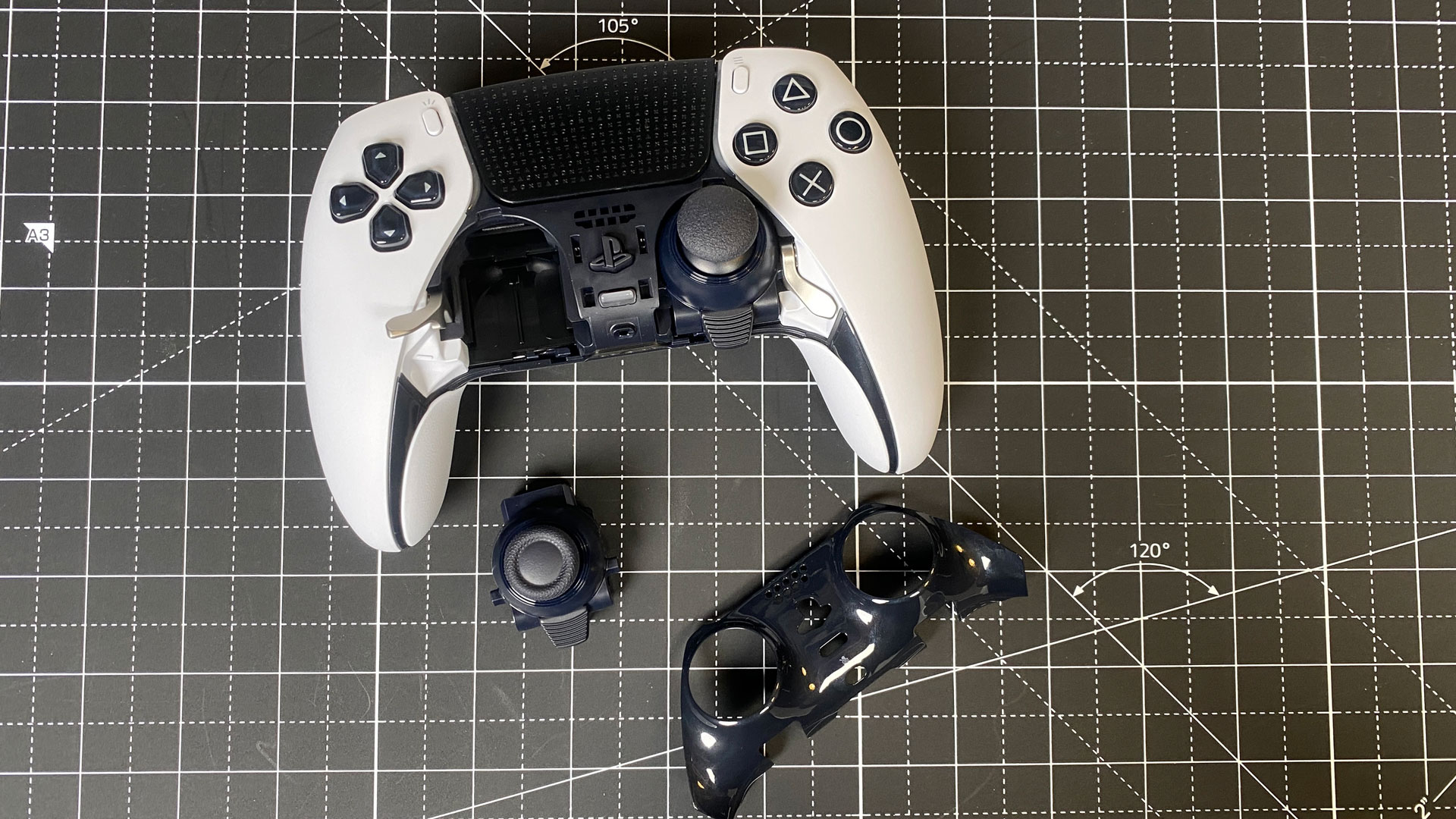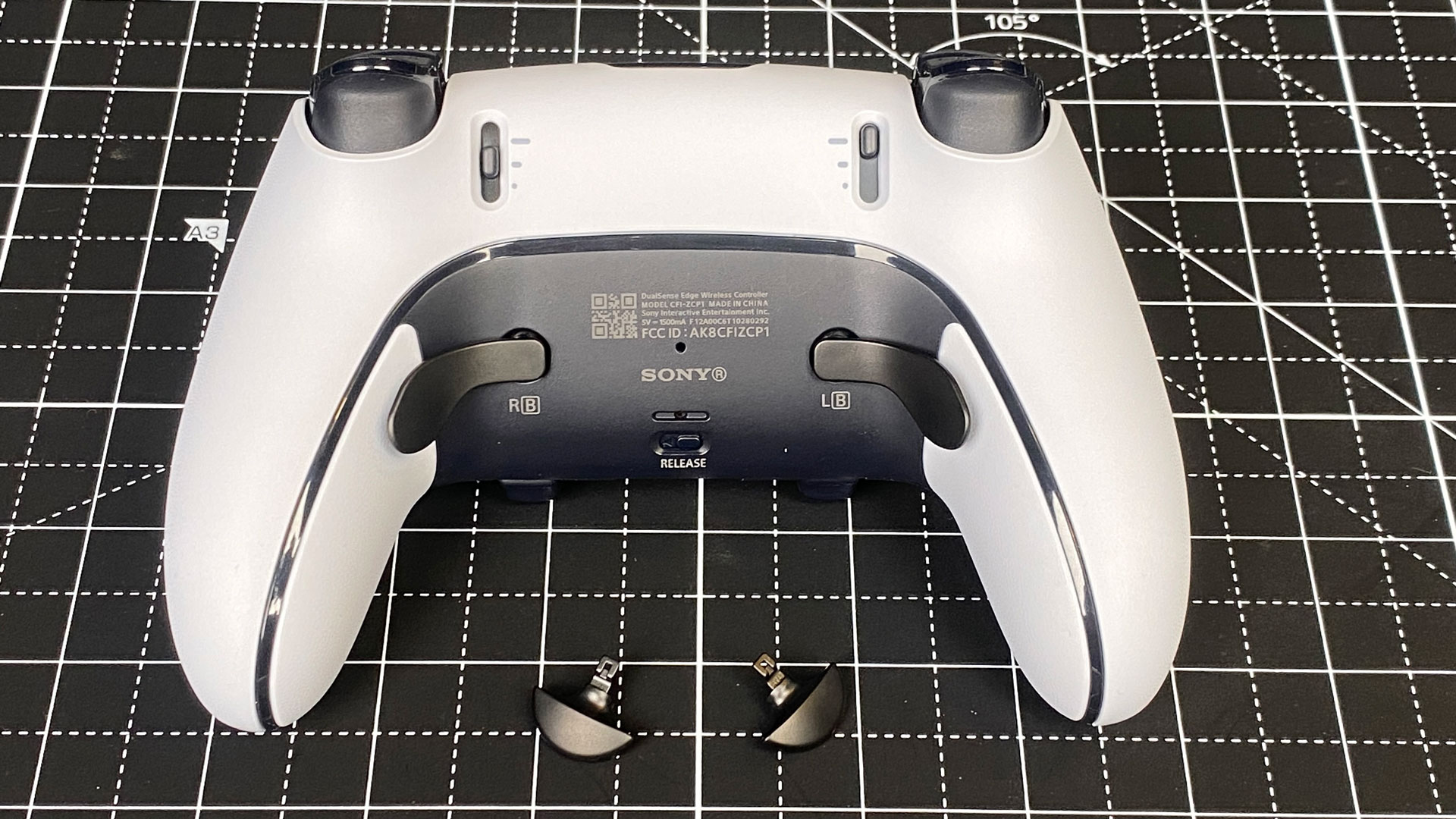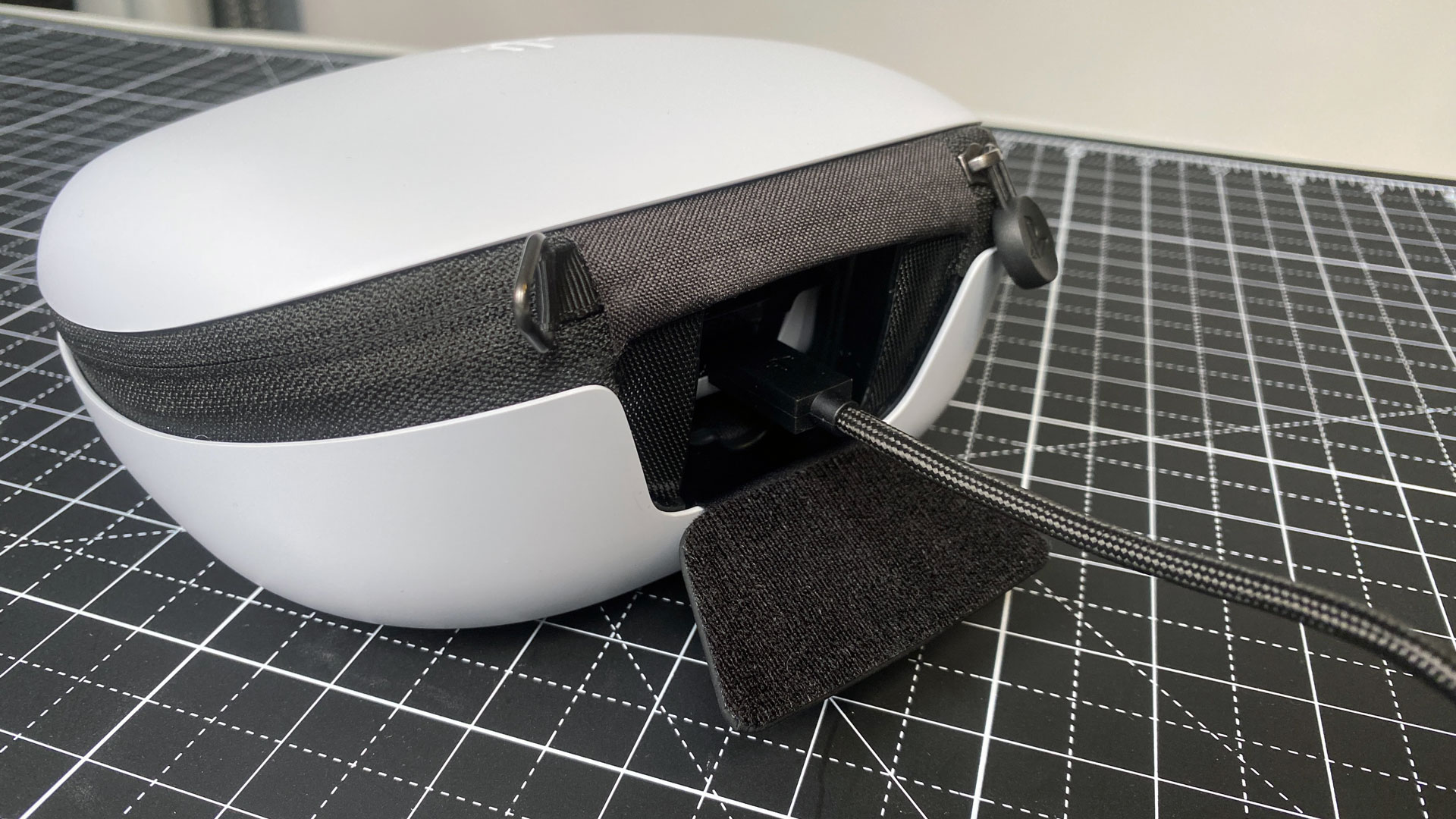Tom's Hardware Verdict
The DualSense Edge for the PlayStation 5 is a comfortable, luxurious controller for competitive gamers with plenty of customization options, but its price means that only die-hard competitors need apply.
Pros
- +
Feels better in the hand than standard DualSense
- +
You can replace joysticks with no tools
- +
Easy customization options
- +
Long, braided USB cable
Cons
- -
Very expensive
- -
Shorter battery life than regular DualSense
Why you can trust Tom's Hardware
Back when I first reviewed the PlayStation 5, I said that the DualSense controller is "packed with features." With the DualSense Edge, Sony has stuffed it with more. Think of it as the Thanksgiving turkey of controllers: it's too much for most people, but it sure is nice.
The DualSense Edge is Sony's first real take on a pro controller. It has dabbled in attachments to add back buttons, sure, but this adds so much more. The DualSense Edge, adds a pair of mappable back paddles, swappable joysticks with alternate cap options, adjustable triggers, a long braided cable, a carrying case and more.
That all adds up to a $200 PS5 controller — half the price of a PS5 digital edition and $130 more than a usual DualSense controller.
For most people, this is overkill. But for PlayStation diehards and competitive players who want the best option out there, the DualSense Edge may prove to be worth it, as long as you remember to charge the battery regularly.
Design and Comfort of the DualSense Edge
The DualSense Edge, when it launched, seemed heavy at 280 grams. The DualSense Edge is heavier, weighing in at 322 grams on our scale as set up out of the case (Sony didn't respond to a request for an official spec sheet). It feels like a luxury item in the hands.
At first glance, it looks very much like the existing DualSense, but it has a black trackpad and buttons and a shiny, rather than matte, cover around the joysticks. I personally prefer the matte look of the original controller, because this one attracts fingerprints. But I don't think that will bother most people. If you like the way the existing DualSense feels in your hands, the DualSense Edge isn't making any massive changes, and largely feels better; I'll take that trade.
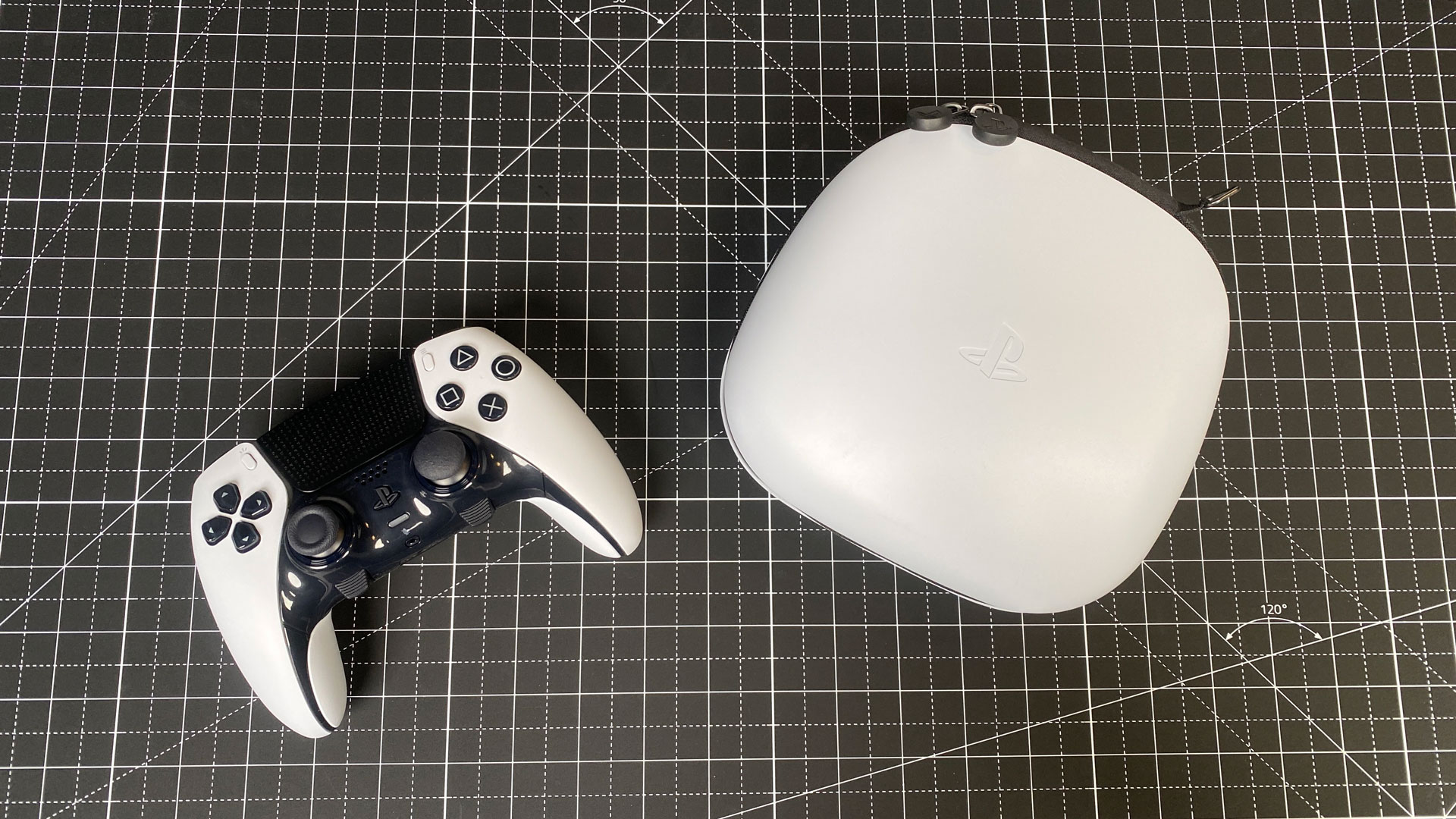
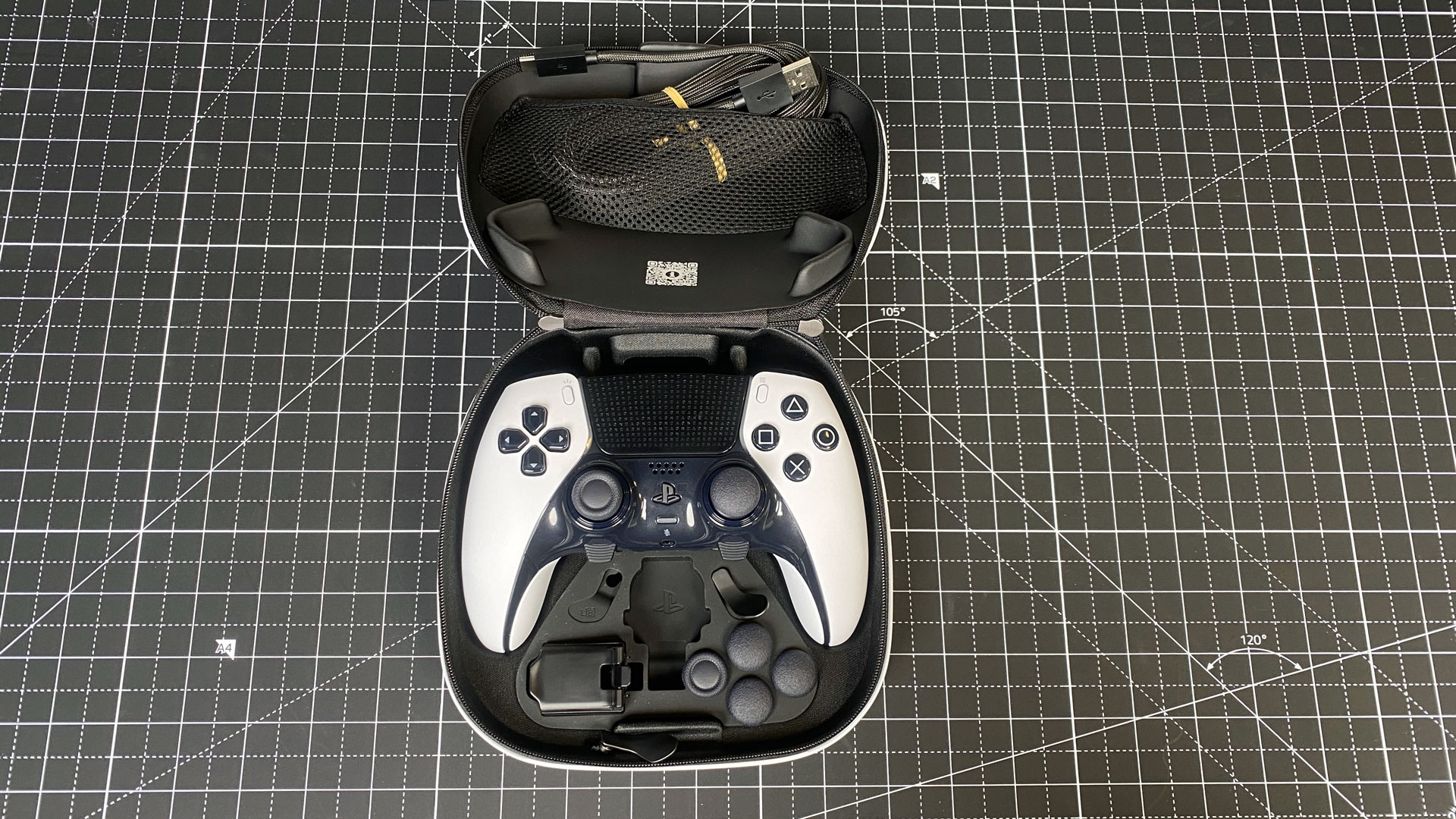
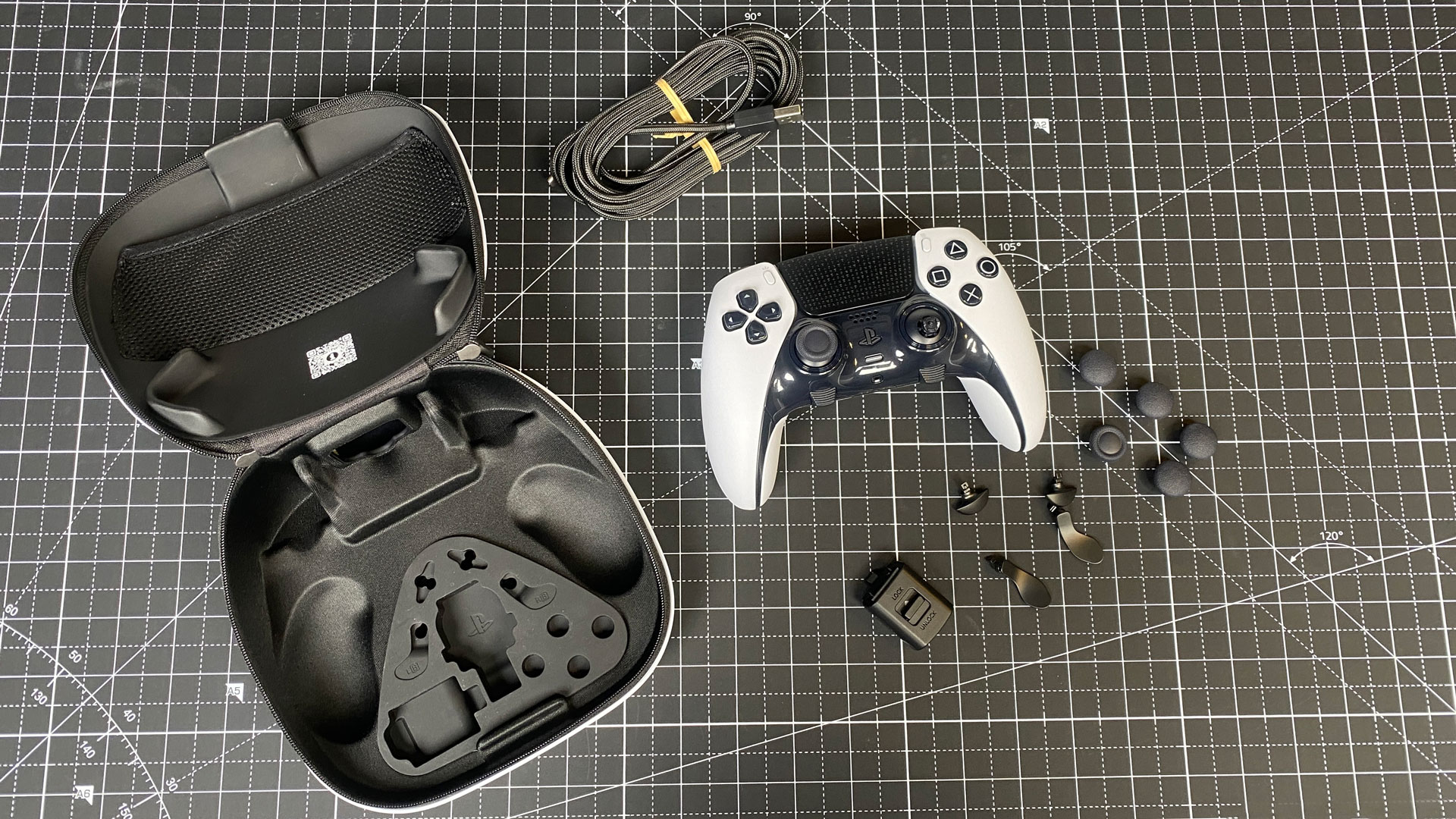

Of course, there are also a few extras. The two function buttons jut out of the bottom, which let you change control scheme profiles mid-game, or to make adjustments to chat volume. The grips on the inside of the controller's grips are rubberized, which adds tremendously to the comfort.
The controller comes in its hard white carrying case, which includes a passthrough port for charging, as well as all of the accessories: two high-dome and two low-dome stick caps (along with the traditional caps that come pre-attached to the controller); four back buttons (two can be used at a time), including two level-style and two half domes; a long braided USB cable; and a special housing to lock the cable to the controller for those who prefer to play in wired mode. There's also a QR code inside the case that serves as a digital instruction manual
One neat design feature is that you can replace the joysticks without any tools. A small release latch on the front of the controller lets you pop the cover off. There are further levers for each joystick module, and then you can simply swap one out and place another in. Sony is selling replacement modules for $19.99 per stick. It's a tacit admission that, yes, joystick drift can be a problem on Sony's controllers. Part of me wishes that Sony changed the design altogether for this controller. But since it didn't, giving the people who are mostly likely to push their controllers hard the ability to swap out the sticks without junking an entire controller seems like a solid repairability compromise.
My first instinct when I opened the DualSense Edge was to attach a tall dome on the right stick, which is great for aiming in competitive shooters, while leaving the standard cap on the left stick. I initially went for the level-style back buttons, but found that the half domes came up perfectly to my middle fingers for easy pressing.
I have dabbled with these levers throughout my career and often found them to be in the way, so this felt like a great compromise. Of course, I could always switch (and would be especially likely to switch back to a standard joystick layout for other types of games, like adventure or platformers). There are fewer back buttons than what you get on the Xbox Elite Controller Series 2, which has four, letting you completely replace the face buttons if you so choose.
Get Tom's Hardware's best news and in-depth reviews, straight to your inbox.
The shape of the DualSense Edge is so similar to the DualSense that it can fit in the same Playstation-branded charging cradle and connect to the same headsets with a 3.5 mm jack, so don't worry about any other accessories that you own.
DualSense Edge Specifications
| Weight | Approx. 322 grams (0.71 pounds) | Row 0 - Cell 2 |
| Battery Life | "Moderately shorter" than standard DualSense | Row 1 - Cell 2 |
| Connectivity | Bluetooth, USB Type-C to Type-A cable (included) | Row 2 - Cell 2 |
| Accessories | Standard, low dome and high dome joystick caps; braided USB cable; lever and half dome back buttons; connector housing lock; carrying case | Row 3 - Cell 2 |
| Price | $199.99 | Row 4 - Cell 2 |
DualSense Edge Setup and Functionality
When you first connect your DualSense Edge, the system will prompt you to take a "tour" of the controller, going over its functions. After that, you can start remapping buttons.
Personally, I’m pretty used to the standard PlayStation layout, but this is the important place to change your back paddles. You can have multiple profiles, and then switch between them with the function menu, even mid-game.
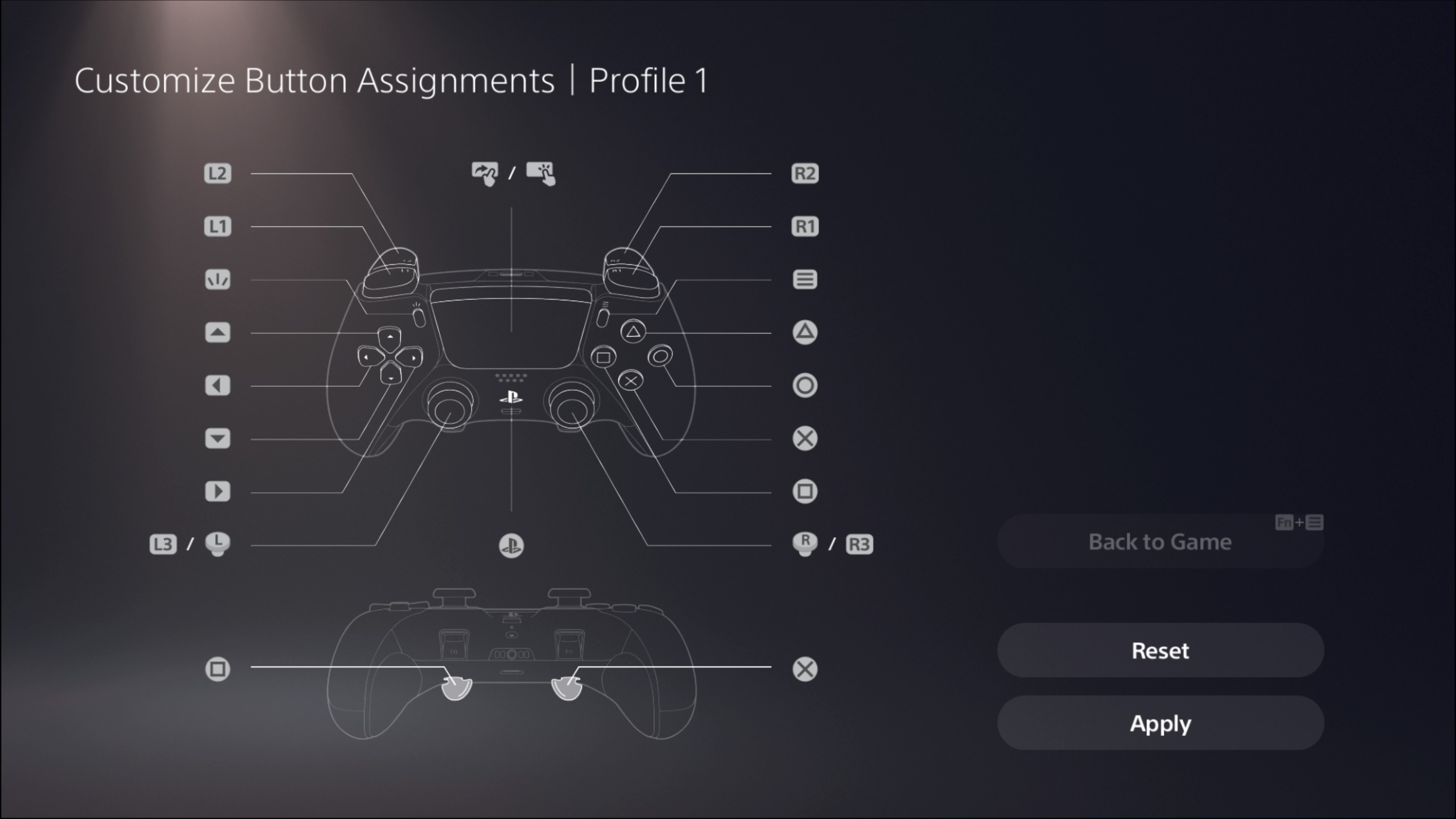
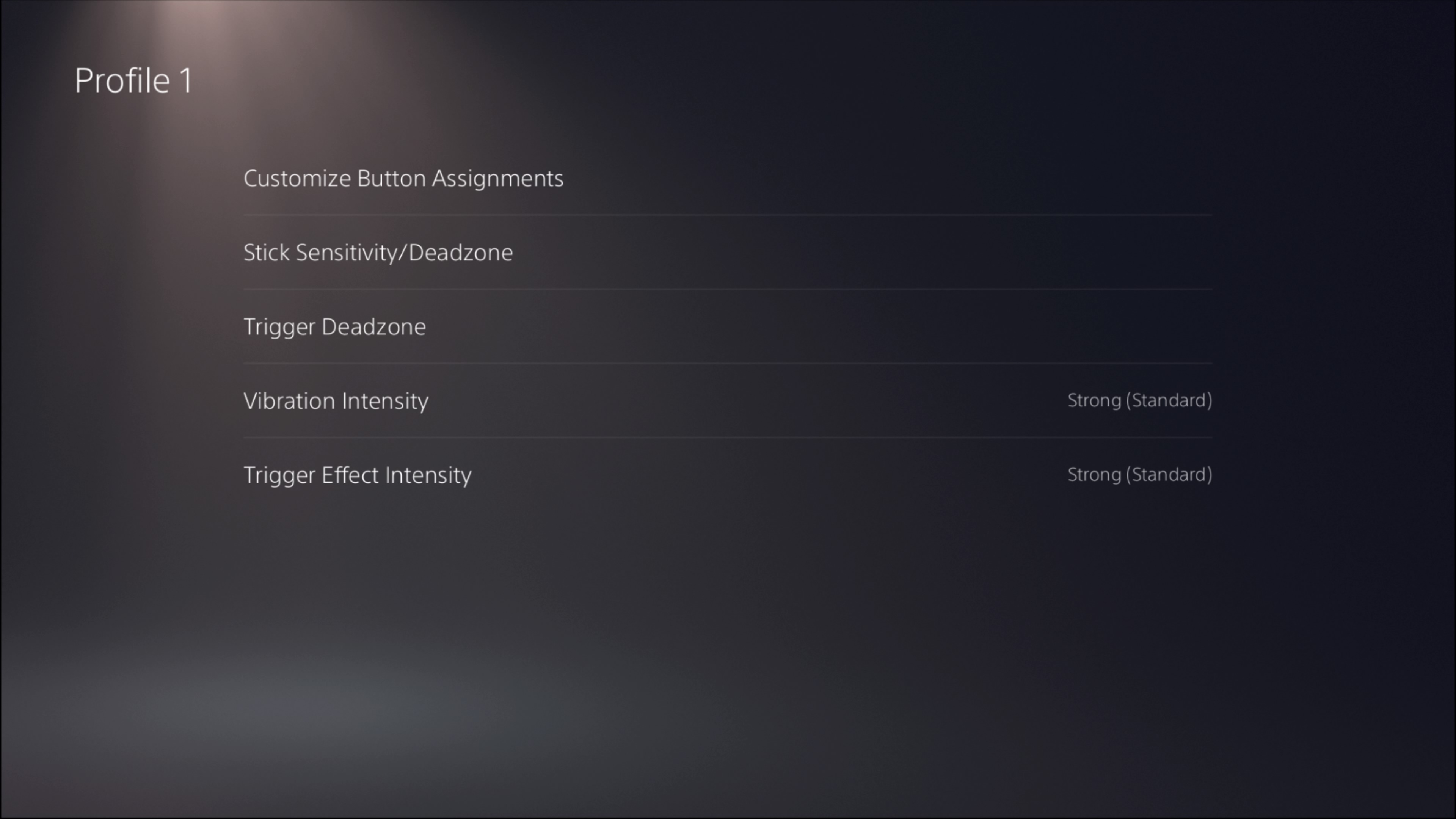
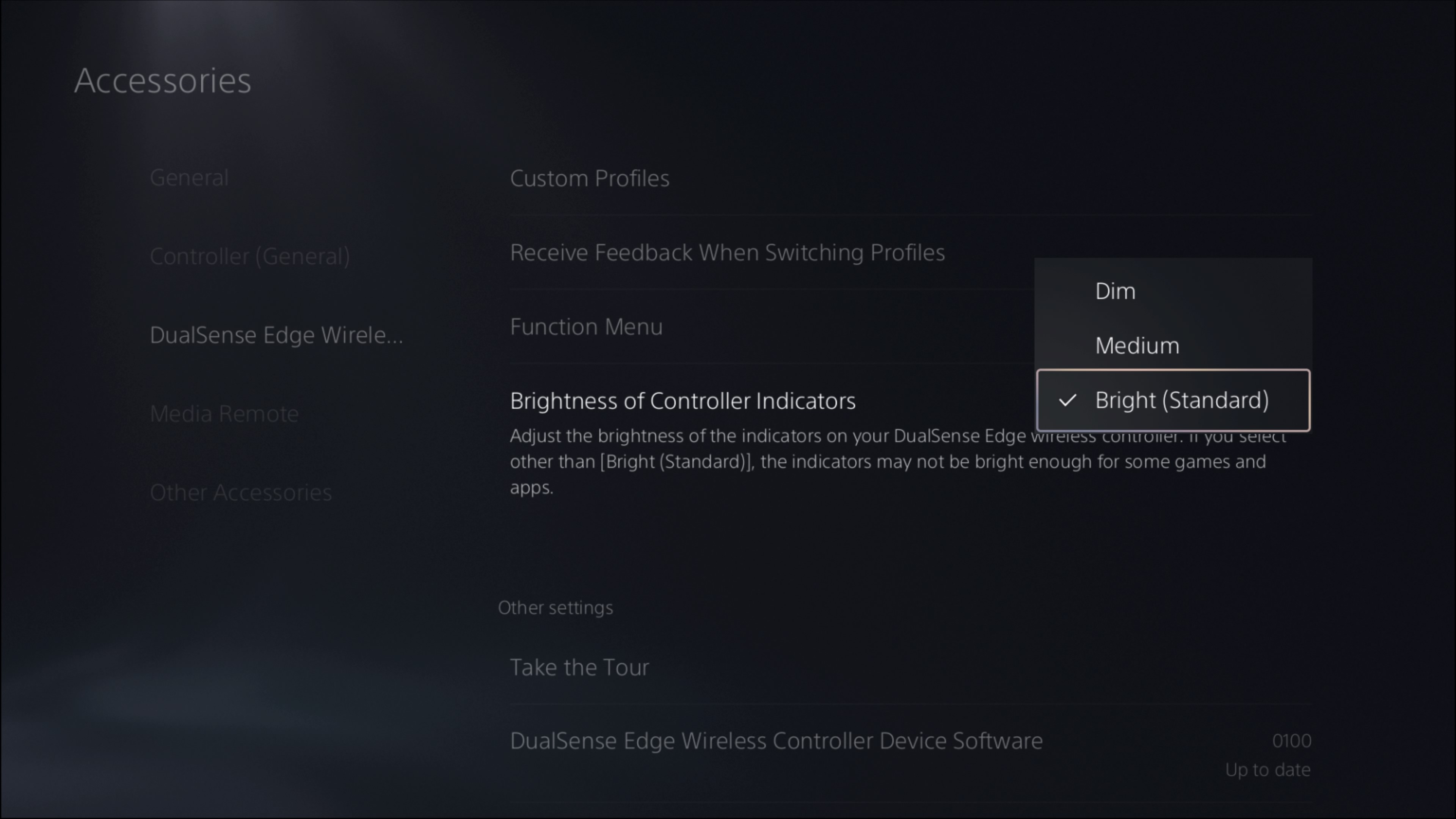
You can also make the same changes you make to the standard controller, including adjusting trigger effect intensity, vibration levels and the brightness of the controller’s built-in lights.
Gaming on the DualSense Edge
I felt like I was better at games with the DualSense Edge. I wasn't, but I felt like it. Maybe $200 buys you confidence.
In general, it feels like you're playing PlayStation. But I set the back buttons to key functions, which at least gave me the ideation that I was improving. In Fortnite, I had one set to jump and another set to the build menu, which greatly reduced the amount of time I spent with my hands off of the sticks (of which I used the high dome on the right side for better aiming). For some, this is where the lack of two more back buttons. When I wanted to switch from a weapon to my pickaxe, I still was reaching up to the triangle button.
In Rocket League, I had one trigger set to jump and another set to boost (I prefer the normal sticks for this game but you do you). In that case, the two buttons were enough for me.
My favorite games are narrative driven. In Spider-Man: Miles Morales, I'm pretty used to the standard controller setup. I did try setting the back buttons to different combat maneuvers, and it worked, but I didn't feel that I was getting the same advantage that I did in competitive play. Spider-Man uses the adaptive triggers, and I found that unless I kept the controller at the default trigger setting, the adaptive functionality went away.
Gaming on PC has some intricacies. When I connected this PS5 controller to a PC, Windows recognized the controller as a DualSense Edge, but Steam saw it as a normal PlayStation 5 controller. But when I dug into Doom Eternal, I was surprised to see that the Edge's back buttons were assigned to the last profile I had used on PS5, which let me jump and rush through enemies with ease.
It would be great if Sony could build an app for the Edge, but it's also possible that developers for games (or clients like Steam) could do that and allow for customizations without going to a PC first. As Sony starts putting out more of its games on PC, it should make sure its flagship controller works as well as possible on the platform.
DualSense Edge Battery Life
The bad news here is that the DualSense Edge has shorter battery life than the standard controller. Back in December, Sony told the Verge:
"The DualSense Edge wireless controller’s operating time is moderately shorter than the original DualSense wireless controller because we’ve included many more features within the same form factor and ergonomic design as the original DualSense controller. We wanted to strike a good balance between wireless operating time and delivering robust, high-performance features. Additionally, the longer USB braided cable is also great for competitive players who prefer playing with a wired connection to avoid wireless interference – this option preserves battery life."
In my testing, which included a mix of Fortnite, Rocket League, Spider-Man: Miles Morales and Doom Eternal on the PC side, I got about 5 hours out of the DualSense Edge. You can likely squeeze more of a charge if you change some settings. I used the out of the box defaults, leaving rumble and haptics on, as well as the controller light set to bright. Turning the light down and turning off the feedback may prolong your time between charges.
In general, this isn't great. My DualSense from launch has already lost some capacity, so we'll have to see how this holds up over time. At least the people who care the most can still fit the Edge in a charging cradle to keep it topped up, and there's a convenient velcro charging passthrough at the top of the case.
Bottom Line
It feels great to play on the DualSense Edge. Diehard PlayStation gamers who love competitive games and are wearing out the joysticks on their existing controllers will get some value out of the Edge, as long as they're willing to charge it slightly more often than the standard controller.
For most people, it's hard to recommend a controller that costs more than twice what a regular DualSense commands. You're halfway to another PlayStation. It's not uncommon for pro controllers, though. Microsoft charges $179 for its pro controller.
If you're playing exclusively on PlayStation, this is probably the best pro controller to get. Those who switch between PlayStation and PC will still be able to use it, but not get all of the features on PC at the moment. If you're PC only, an Xbox Elite Series 2 may be better for you, as most games already have Xbox controller support on Windows.
But if you've been waiting for years for an official pro controller for PlayStation and want a luxury feel at the expense of a bit of battery life (and a lot of cash), there's finally a solid gamepad for you.

Andrew E. Freedman is a senior editor at Tom's Hardware focusing on laptops, desktops and gaming. He also keeps up with the latest news. A lover of all things gaming and tech, his previous work has shown up in Tom's Guide, Laptop Mag, Kotaku, PCMag and Complex, among others. Follow him on Threads @FreedmanAE and BlueSky @andrewfreedman.net. You can send him tips on Signal: andrewfreedman.01
